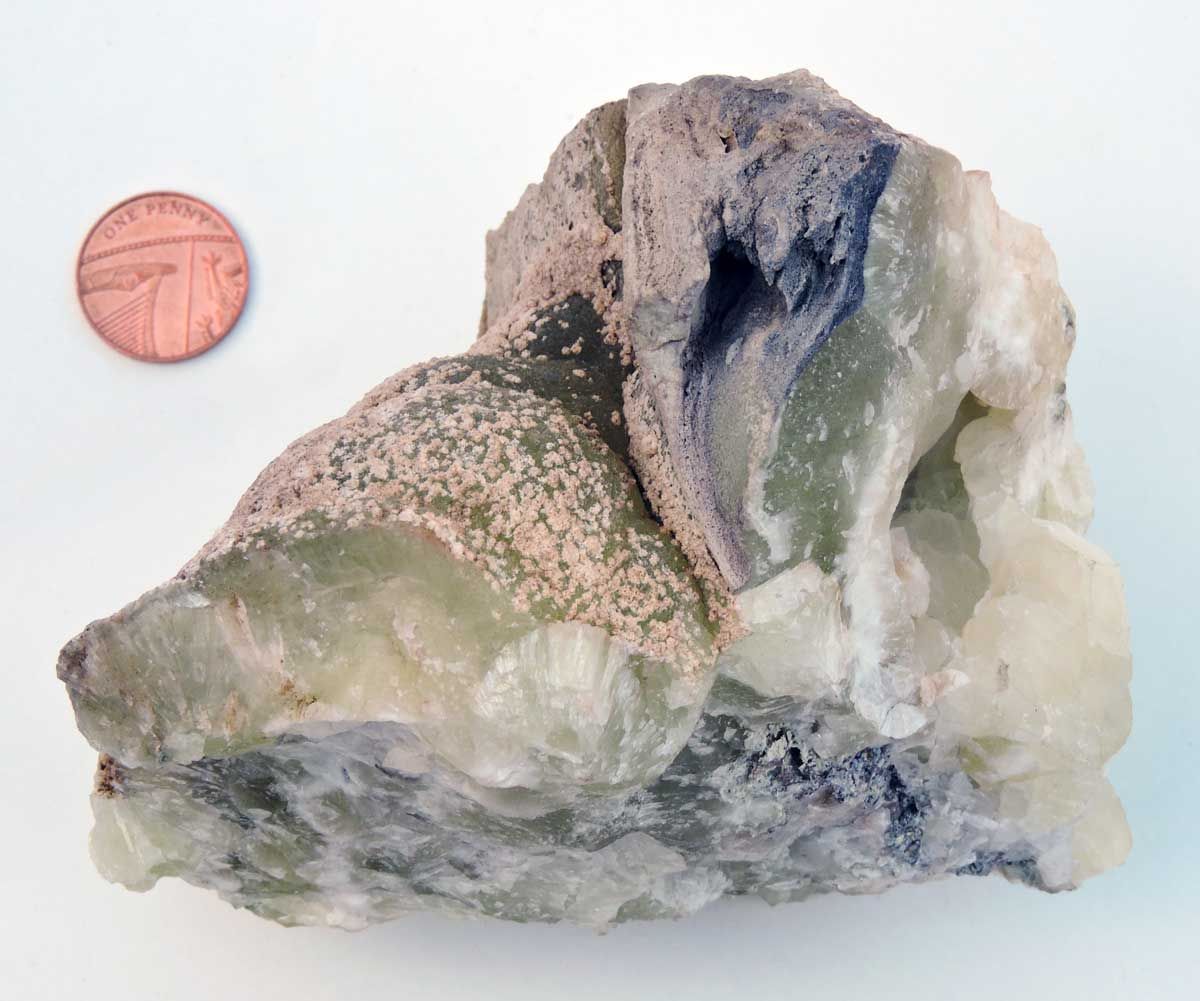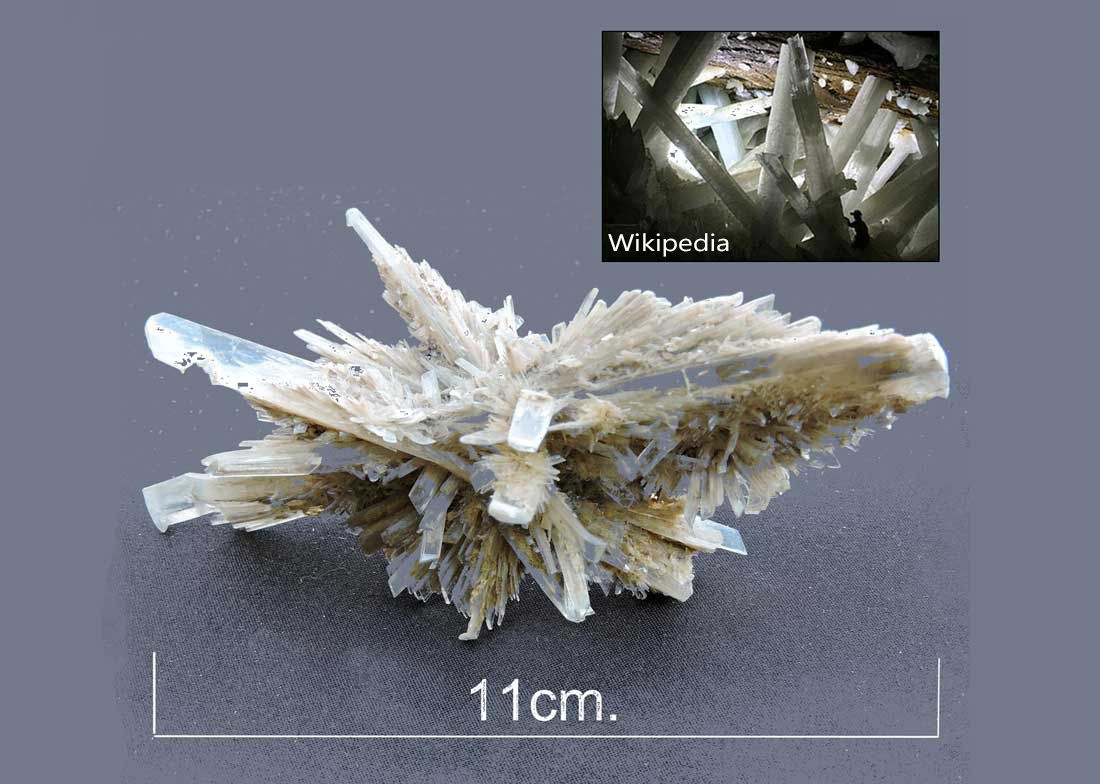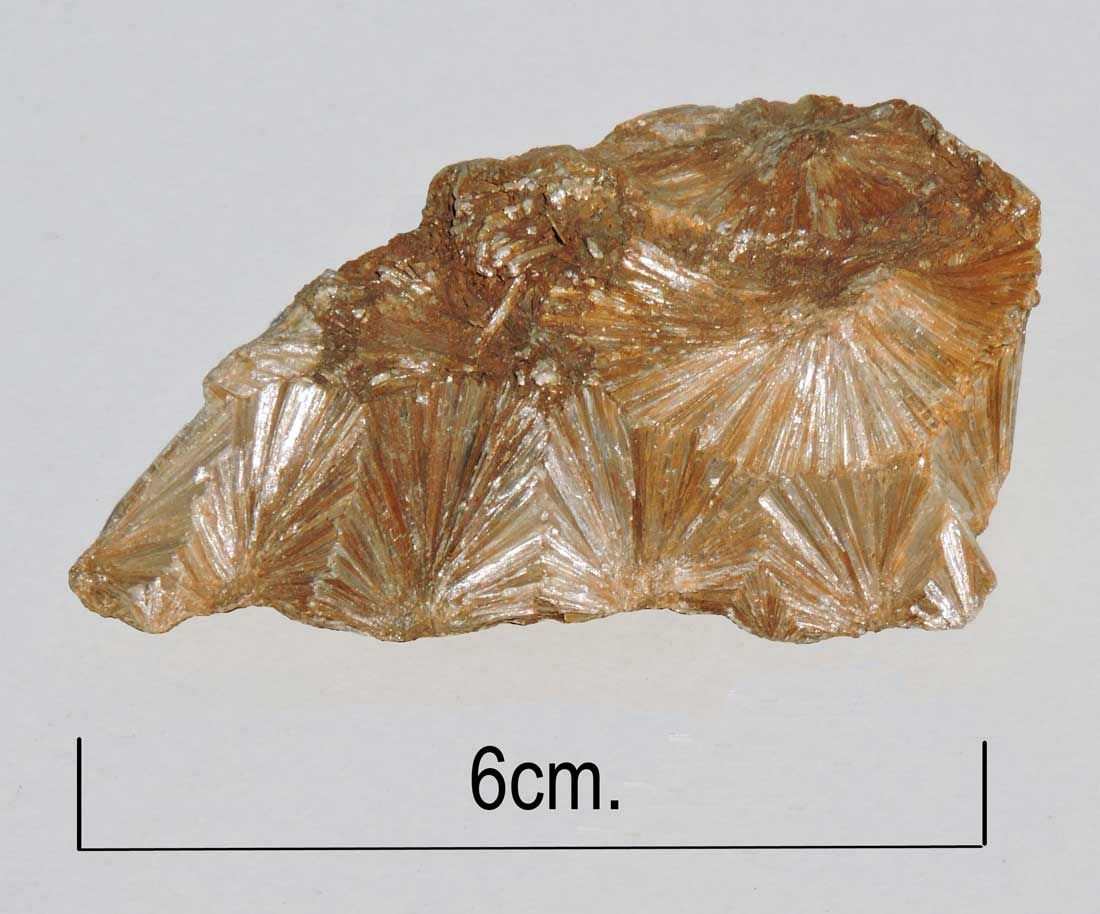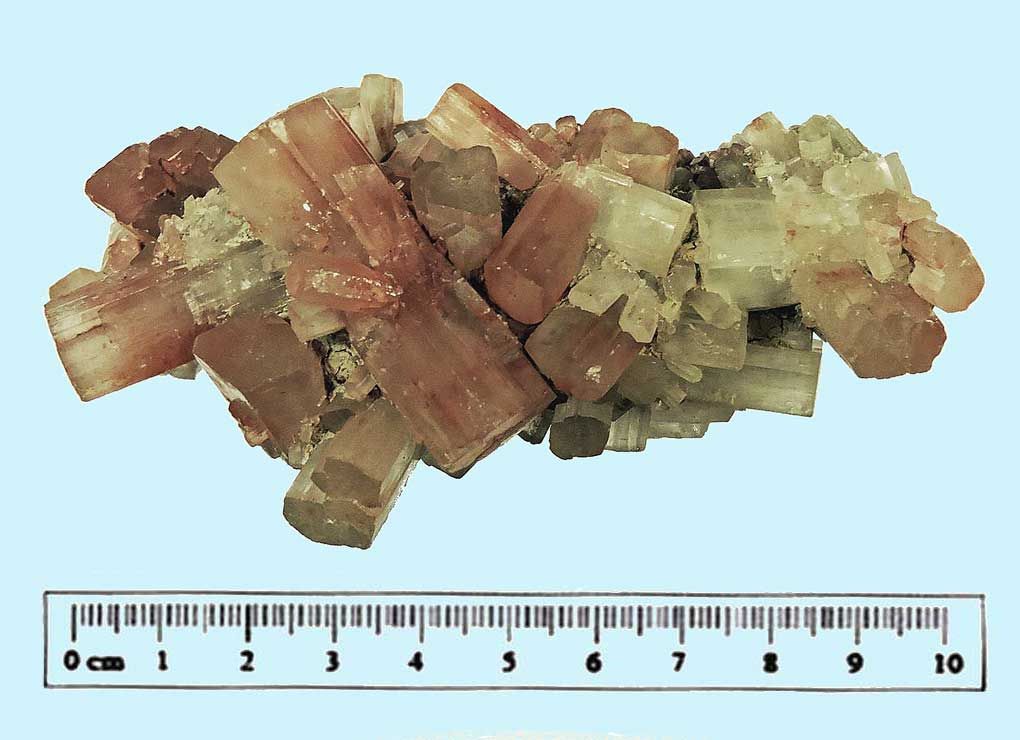
Selenite ( Desert rose var. ). Chihuahua.
Selenite, Desert rose var. is one of the four crystal structures of gypsum, with the formula of CaSO4 . 2H2O, calcium sulfate dihydrate. Desert rose is a colloquial name given to this particular crystal structure, which is not exclusive to selenite. Desert rose structures form in drying up salt basins, and incorporate fine sand grains in their fibrous structure as the crystals grow. This specimem is from Chihuahua in Mexico.



